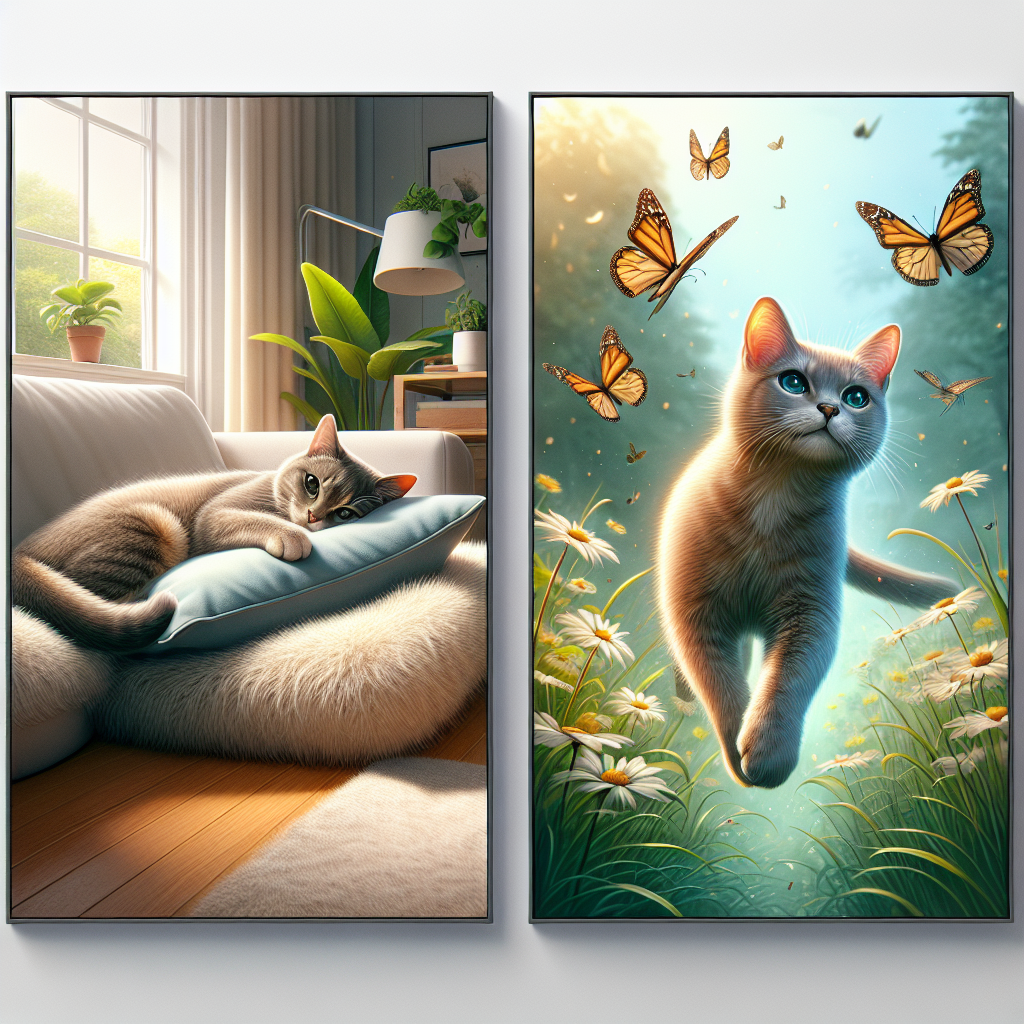
Introduction
The debate between indoor and outdoor living for cats is a long-standing one, with passionate arguments on both sides. Understanding the benefits and drawbacks of each lifestyle is crucial for any cat owner seeking to make the best decision for their feline friend. This guide will delve into the various aspects of indoor and outdoor cat living, considering factors such as health, safety, and overall well-being.
Health and Longevity
One of the most significant factors to consider when deciding between an indoor or outdoor lifestyle for your cat is health and longevity.
Indoor Cats
Indoor cats typically have a longer lifespan than outdoor cats. The controlled environment of a home reduces the risk of exposure to diseases, parasites, and injuries. Indoor cats are less likely to contract feline leukemia, feline immunodeficiency virus, and other infectious diseases spread through contact with other animals. Moreover, the risk of fleas, ticks, and worms is significantly lower, provided that the home environment is kept clean.
Outdoor Cats
Outdoor cats face numerous health risks that can shorten their lifespan. They are more susceptible to infectious diseases, parasites, and physical injuries from fights with other animals, accidents, or predators. However, some argue that outdoor cats benefit from increased physical activity, which can help maintain a healthy weight and prevent obesity-related health issues.
Safety Concerns
Safety is another critical consideration in the indoor vs. outdoor debate.
Indoor Cats
Keeping cats indoors significantly reduces the chances of accidents and injuries. Indoor cats are protected from traffic, predators, and other dangers that outdoor cats face daily. Additionally, they are less likely to get lost or stolen. However, owners must cat-proof their homes to prevent accidents, such as falls from high places or ingestion of toxic substances.
Outdoor Cats
Outdoor cats encounter numerous safety hazards. Traffic poses a significant threat, as many cats are injured or killed by vehicles each year. Predation by larger animals and theft are other potential dangers. To mitigate these risks, some owners choose to create a secure outdoor enclosure or use a harness and leash to allow their cats some outdoor time under supervision.
Mental Stimulation and Enrichment
The mental well-being of a cat is closely linked to its environment and the type of stimulation it receives.
Indoor Cats
Indoor cats may face challenges in terms of boredom and lack of stimulation. Without the ability to explore and hunt, they may become lethargic or develop behavioral issues. To counteract this, owners should provide ample enrichment through interactive toys, scratching posts, climbing structures, and regular playtime. Creating a stimulating environment is essential for the mental health of an indoor cat.
Outdoor Cats
Outdoor cats naturally receive more mental stimulation due to their ability to explore, hunt, and engage with their environment. This can lead to a more fulfilled and content cat. However, the trade-off is the increased risk of injury and illness. Owners of outdoor cats should still provide enrichment opportunities indoors to ensure their cats remain stimulated when inside.
Environmental Impact
Cats have a notable impact on the environment, particularly when allowed to roam outdoors.
Indoor Cats
Cats kept indoors have a minimal impact on local wildlife. They do not hunt birds or small mammals, which helps preserve biodiversity in the area. Indoor cats also produce less outdoor waste, contributing to a cleaner environment. Responsible ownership, including regular litter box maintenance and proper waste disposal, is essential for minimizing any negative environmental impact.
Outdoor Cats
Outdoor cats can significantly affect local ecosystems. They are natural hunters and can decimate bird populations and other small wildlife. This predation can disrupt local biodiversity and contribute to the decline of certain species. Some communities have enacted policies to manage outdoor cat populations to mitigate these effects.
Owner Responsibility and Lifestyle
Choosing between an indoor or outdoor lifestyle for your cat also depends on your personal circumstances and ability to provide proper care.
Indoor Cats
Owning an indoor cat requires a commitment to providing a stimulating and safe environment. This may involve investing in toys, furniture, and regular playtime to prevent boredom. Owners must also be vigilant about maintaining a cat-proof home to ensure safety.
Outdoor Cats
Outdoor cat ownership demands a different approach. Owners need to be aware of their cat’s whereabouts and potential hazards. Regular veterinary check-ups, vaccinations, and parasite prevention are crucial. Some owners may choose to install a GPS tracker on their cat’s collar for peace of mind.
Hybrid Solutions
Many cat owners seek a balanced approach, allowing their cats to enjoy the best of both worlds.
Leash Training
Training a cat to walk on a leash can provide outdoor experiences in a controlled manner. This option allows a cat to explore safely while under the owner’s supervision.
Outdoor Enclosures
Building a secure outdoor enclosure or “catio” can give cats access to fresh air and stimulation without the risks associated with free-roaming. These enclosures can be customized to fit any space and provide a safe haven for cats to enjoy the outdoors.
Conclusion
The decision to keep a cat indoors or allow it to roam outdoors depends on various factors, including health, safety, environmental impact, and personal lifestyle. Both indoor and outdoor cat ownership require commitment and responsibility from the owner. By weighing the pros and cons and considering hybrid solutions, cat owners can make informed decisions that best suit the needs of their feline companions. Ultimately, the goal is to ensure that each cat lives a happy, healthy, and safe life, whether indoors, outdoors, or a combination of both.
#ChatGPT assisted in the creation of this article.






